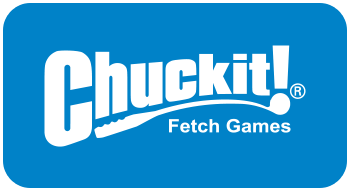You have no items in your shopping cart.

- Home /
- Blog
5 Essential Tips for Sourcing the Perfect Recycling Clothes Bin for Your Business
In an era where sustainability is becoming paramount, businesses are increasingly recognizing the importance of integrating eco-friendly practices into their operations. According to a recent report by the Global Recycling Foundation, approximately 92 million tons of textile waste is generated worldwide each year, highlighting the urgent need for effective waste management solutions. One essential component of this strategy is the adoption of a reliable Recycling Clothes Bin, which not only helps in the efficient collection of old garments but also promotes responsible disposal among customers and employees.
The right Recycling Clothes Bin can significantly enhance a company’s recycling rates, contributing to a circular economy and reducing the environmental impact associated with discarded textiles. In this blog, we will explore five essential tips for sourcing the perfect Recycling Clothes Bin tailored to meet the unique needs of your business while fostering a culture of sustainability.
Choosing the Right Size: How to Calculate Your Business's Clothing Waste Needs
When it comes to sourcing the perfect recycling clothes bin for your business, understanding the right size is crucial. Businesses generate varying amounts of clothing waste, influenced by factors such as industry type, customer traffic, and seasonal trends. To determine the size you need, start by estimating your average monthly clothing waste. Keep track of the items collected over several weeks to get an accurate picture. This data will help you identify a consistent volume, allowing you to choose a bin that can efficiently accommodate your waste without overflowing.
Additionally, consider the frequency of collection services when selecting the size of your recycling clothes bin. If your business generates a high volume of waste but collections occur infrequently, a larger bin may be necessary to ensure it doesn't fill up too quickly. Conversely, if your collection service operates regularly, a mid-sized bin may suffice. By calculating your waste production and aligning it with your collection schedule, you can optimize your recycling efforts while contributing to a more sustainable business model.
Understanding Material Types: Selecting Eco-Friendly and Durable Options for Bins
When selecting a recycling clothes bin for your business, understanding the material types is crucial. Choosing eco-friendly options not only aligns with sustainability goals but also enhances durability. According to recent studies, the adoption of sustainable materials in packaging can significantly reduce environmental impacts. For instance, alternatives to conventional plastics, such as biodegradable and compostable materials, are being advocated due to their lower ecological footprint. Research indicates that typical plastic bags can take up to 1,000 years to degrade, highlighting the urgency for businesses to transition to more sustainable options.
Additionally, recognizing the various recycling symbols can aid in selecting the right bin materials. Experts emphasize the importance of familiarizing oneself with recycling codes 1-7, as certain plastics are non-recyclable and contribute to environmental degradation. By prioritizing bins made from materials that are both durable and recyclable, businesses can not only manage waste effectively but also contribute to a circular economy. Incorporating innovative packaging solutions and sustainable practices is essential in making a positive impact on the environment while meeting consumer demands for eco-friendly products.
Compliance Matters: Meeting Local Regulations in Clothing Recycling Solutions
When considering recycling clothes for your business, compliance with local regulations is paramount. Understanding the specific guidelines and requirements set forth by local authorities can help you avoid potential fines and improve your reputation in the community. Each region may have distinct rules concerning waste management and recycling, particularly for textile waste. Familiarizing yourself with these regulations enables you to select a recycling solution that not only meets legal standards but also aligns with sustainable practices.
Incorporating compliance into your recycling strategy means researching licensed providers and ensuring that your chosen clothes bin is equipped to handle the designated textiles properly. Look for bins that are marked with relevant certifications and guarantees that they will dispose of or recycle items in accordance with local laws. This proactive approach not only supports your business's integrity but also contributes to a broader culture of responsibility and sustainability within your industry, enhancing brand loyalty among environmentally conscious consumers.
Maximizing Visibility: Strategic Placement for Increased Recycling Engagement
Strategic placement of recycling clothes bins is vital for maximizing visibility and encouraging recycling engagement within your business. To start, consider high-traffic areas where your staff and customers frequently pass by. This includes entryways, near elevators, or communal spaces where people congregate. By positioning bins in these prominent locations, you create a clear and convenient option for individuals to dispose of unwanted clothing, ultimately fostering a culture of sustainability.
Another effective tip is to leverage signage and color coding to enhance bin visibility. Use bright colors and clear labels that indicate the purpose of the bins, making it easy for people to understand what items are accepted. Engaging visuals or educational materials can also be displayed nearby to highlight the importance of recycling clothes and its positive impact on the environment. This not only increases awareness but also serves to remind individuals about the significance of their contributions to recycling efforts.
Lastly, consider collaborating with local charities or recycling organizations to host events or initiatives that promote clothing recycling. This engagement not only boosts visibility for your recycling bins but also reinforces community involvement. When employees and customers see that their actions lead to tangible benefits, such as supporting local causes, they are more likely to participate actively, resulting in enhanced recycling rates.
Cost Analysis: Budgeting for Quality Bin Options vs. Long-term Savings
When considering the right recycling clothes bin for your business, it is crucial to perform a detailed cost analysis. Budgeting for high-quality bin options may initially seem steep; however, investing in durable and efficient models can lead to significant long-term savings. Quality bins not only withstand wear and tear but also support better waste management systems, enabling your business to reduce operational costs and ensure compliance with increasing environmental regulations.
In an era where smart city solutions are becoming paramount, integrating IoT-enabled waste management systems shows promise for improving efficiency. By leveraging technology, businesses can track recycling metrics and optimize collection routes, leading to better resource allocation. This kind of strategic planning can enhance your recycling efforts, saving both time and money, while also contributing to sustainability goals. Understanding the trade-off between upfront costs and long-term benefits is essential to making an informed decision that aligns with your operational goals and commitment to the environment.
5 Essential Tips for Sourcing the Perfect Recycling Clothes Bin for Your Business - Cost Analysis: Budgeting for Quality Bin Options vs. Long-term Savings
| Feature | Low-Cost Option | Mid-Range Option | High-Quality Option |
|---|---|---|---|
| Material | Plastic | Steel | Recycled Aluminum |
| Average Cost | $50 | $150 | $300 |
| Durability (Years) | 1-2 | 5-7 | 10+ |
| Maintenance Frequency (Years) | Every Year | Every 3 Years | Every 5 Years |
| Recycling Capacity (Liters) | 100 | 200 | 300 |
| Warranty (Years) | 1 | 3 | 5 |
